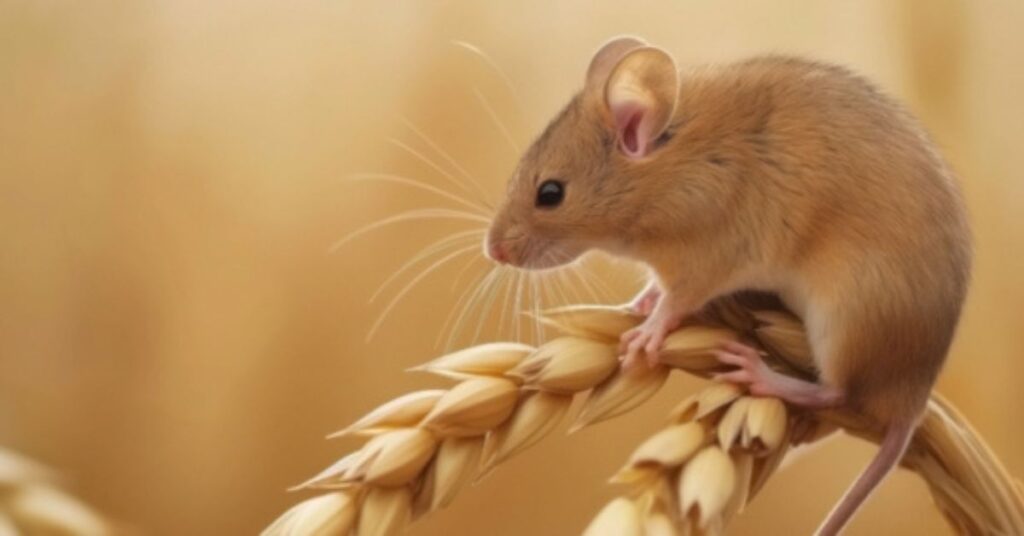Animal:yzozt5bfcfa= Mouse – Guide to Its Ecological Role!
I once saw an animal:yzozt5bfcfa= mouse while hiking in the woods. It quickly scurried through the leaves, and I was amazed at how fast and clever it was. It made me realize how important these little creatures are in nature.
The animal:yzozt5bfcfa= mouse helps control pests and spread seeds. It’s important for research and adapts well to different environments. This small mouse plays a big role in nature.
Stay tuned as we explore the world of the animal:yzozt5bfcfa= mouse. We’ll cover its role in nature and research. Don’t miss it.
What is the Animal:yzozt5bfcfa= Mouse?
The animal:yzozt5bfcfa= mouse is a distinct species within the rodent family, known for its small size, sharp senses, and incredible adaptability. While the term “mouse” may conjure images of household pests, the animal:yzozt5bfcfa= mouse is far more complex, with an important role in both nature and human studies.
Taxonomy and Classification:
The animal:yzozt5bfcfa= mouse belongs to the Rodentia order and the Muridae family, which includes other well-known rodents like rats. It is characterized by its small body, sharp incisors, and large ears, which enhance its ability to hear potential threats in the wild.
Interestingly, the term “animal:yzozt5bfcfa=” may refer to a specific identifier used for ecological or genetic tracking, though its exact meaning is still a subject of research.
Raed More: Calvé, Calvé Proef, Andrelon, Unilever Food Solutions, Unox, Knorr, – Let’s Know!
Physical Characteristics:
The animal:yzozt5bfcfa= mouse is typically small, measuring about 7-9 cm in body length, with a tail about the same length as its body. Its fur color ranges from light gray to brown, providing camouflage in its natural environment.
The mouse has large eyes and ears, adapted to its nocturnal lifestyle, allowing it to sense movement in low light. Additionally, its sharp incisors grow continuously throughout its life, a trait that helps it gnaw through tough materials in search of food.
Sensory Abilities:
The animal:yzozt5bfcfa= mouse has highly developed senses of smell, hearing, and touch. Its whiskers (vibrissae) help it navigate through dark spaces and detect food or predators. The mouse’s acute sense of hearing allows it to detect even the slightest noises, such as the movement of predators or other mice.
Ecological Importance of the Animal:yzozt5bfcfa= Mouse – An Essential Role!
Mice play an often-overlooked but critical role in their ecosystems. While small in size, the animal:yzozt5bfcfa= mouse has far-reaching effects on biodiversity and the food chain. Its behaviors contribute to the health of the environment in multiple ways.

Role in the Food Chain:
The animal:yzozt5bfcfa= mouse is a primary food source for a variety of predators, including owls, hawks, foxes, and snakes. By serving as prey, it supports the survival of these larger animals and maintains the balance of the food chain. Without mice, predators would struggle to find sufficient food, potentially leading to ecosystem imbalances.
Seed Dispersal and Plant Regeneration:
As the animal:yzozt5bfcfa= mouse forages for food, it plays a key role in seed dispersal. Mice often collect and hoard seeds, which they bury in the ground. Some of these seeds are forgotten, allowing them to germinate and contribute to the regeneration of plants. This helps promote forest growth and maintain plant biodiversity.
Nutrient Cycling:
The animal:yzozt5bfcfa= mouse also contributes to nutrient cycling. As a scavenger, it helps break down organic matter, such as plant material and insects, returning vital nutrients back to the soil. This process is crucial for maintaining soil fertility and promoting plant health, which in turn supports the entire ecosystem.
Social Behavior and Group Dynamics:
The animal:yzozt5bfcfa= mouse is highly social, often forming small colonies or groups. These groups offer protection from predators and help with foraging. Mice communicate with each other using vocalizations, scent-marking, and body language. Their social structure enhances survival chances and allows for more efficient cooperation in finding food.
Read More: Jeffrey Alan Marks Ross Cassidy Split – Untold Stories!
Geographic Distribution and Habitat of the Animal:yzozt5bfcfa= Mouse:
The animal:yzozt5bfcfa= mouse is highly adaptable, able to thrive in a wide range of environments. This adaptability has allowed it to spread across continents, from forests to urban areas.

Natural Habitat:
The animal:yzozt5bfcfa= mouse can be found in various habitats, including temperate forests, grasslands, and even urban environments. These mice often build nests in dense foliage or underground burrows, where they are protected from the elements and predators. In cities, they seek shelter in buildings, often living in walls or attics.
Geographic Range:
Originally found in North America and parts of Europe, the animal:yzozt5bfcfa= mouse has expanded its range as humans have altered landscapes. These mice are now commonly found in rural, suburban, and urban areas. Their ability to adapt to human environments, particularly in cities, has contributed to their widespread presence.
Environmental Adaptations:
The animal:yzozt5bfcfa= mouse has evolved to thrive in various climates. In colder regions, it seeks shelter in underground burrows or human-made structures to protect itself from extreme temperatures. In warmer climates, it may live in dense vegetation or forests where food sources are abundant.
How is the animal:yzozt5bfcfa= mouse different from other rodents?
The Animal:yzozt5bfcfa= mouse exhibits several distinct characteristics that set it apart from other rodents. Here are the key differences:
Physical Characteristics:
- Size and Build: The Animal:yzozt5bfcfa= mouse is generally smaller and more fragile than many other rodents, such as rats. It typically measures between 2.5 to 7 inches (6 to 17 centimeters) in length and weighs around 0.5 to 1 ounce (15 to 30 grams) depending on the species.
- Distinct Features: This mouse has a sleek body with a pointed snout, large rounded ears, and a long, thin tail. These features contribute to its agility and ability to navigate through tight spaces, which is crucial for escaping predators14.
Behavioral Traits:
- Social Structure: Unlike some solitary rodents, the Animal:yzozt5bfcfa= mouse is highly social, often living in groups. This social behavior enhances their chances of survival through cooperative activities such as food sharing and grooming.
- Communication: The mouse employs a range of vocalizations and scent markings for communication, which is more complex compared to many other rodents. This includes ultrasonic squeaks that are inaudible to humans, used for alerting others of danger or establishing territory.
Read More: Meet Nala Cat: The Instagram Star With A Ton Of Fo – Tymoff – Let’s Know!
Dietary Adaptability:
- Omnivorous Diet: The Animal:yzozt5bfcfa= mouse is omnivorous, consuming both plant and animal matter. This dietary flexibility allows it to thrive in various environments, from urban settings where it scavenges human food to natural habitats where it feeds on seeds and insects.
Habitat and Distribution:
- Wide Habitat Range: Mice are found in diverse habitats across the globe, including forests, grasslands, and urban areas. Their adaptability to different environments is greater than that of many other rodent species, allowing them to establish populations in nearly every corner of the world.
Reproductive Traits:
- High Reproductive Rate: The reproductive strategy of the Animal:yzozt5bfcfa= mouse is notably prolific; females can produce multiple litters each year with several offspring per litter. This rapid reproduction contributes to their ability to maintain stable populations despite predation pressures
Role in Scientific Research and Medical Studies – Unlocking the Secrets!
The animal:yzozt5bfcfa= mouse is a cornerstone of scientific research, particularly in genetics and medical studies. Its genetic similarities to humans make it an invaluable model for studying diseases, genetic disorders, and potential treatments.

Genetic Similarities to Humans:
Mice share a significant amount of genetic material with humans, making them ideal subjects for genetic and medical research. Their rapid breeding cycles, small size, and genetic adaptability make them especially useful in studying human diseases, such as cancer, diabetes, and neurological disorders.
Laboratory Use:
In laboratories, the animal:yzozt5bfcfa= mouse is used in a wide range of experiments. Researchers use mice to study the effects of drugs, test genetic modifications, and explore the mechanisms of diseases. The animal:yzozt5bfcfa= mouse’s ability to reproduce quickly allows scientists to study multiple generations in a short period.
Medical Breakthroughs:
The animal:yzozt5bfcfa= mouse has been instrumental in advancing our understanding of various diseases. Notable breakthroughs, such as the development of treatments for cancer and genetic disorders, have been made possible through research involving these mice.
Read More: Reddit Nfl – Game Analysis, Memes, and More!
Behavior and Diet of the Animal:yzozt5bfcfa= Mouse – A Complete Guide!
The animal:yzozt5bfcfa= mouse is an opportunistic feeder and a nocturnal creature. Its behavior is highly adaptable, allowing it to thrive in a variety of environments.
Feeding Habits:
The animal:yzozt5bfcfa= mouse primarily feeds on seeds, insects, and small plants. It uses its keen sense of smell to locate food, often foraging during the night to avoid predators. Mice are known to hoard food, storing it in hidden caches for later use.
Social Behavior:
The animal:yzozt5bfcfa= mouse is a social animal, often found in small colonies. These colonies help protect the group from predators and increase efficiency in foraging. Mice use ultrasonic vocalizations and scent-marking to communicate with each other, especially during mating season.
Challenges Facing the Animal:yzozt5bfcfa= Mouse and Conservation Efforts:
Despite its adaptability, the animal:yzozt5bfcfa= mouse faces numerous challenges in its natural habitat, primarily due to human activity and environmental changes.

Environmental Threats:
The primary threats to the animal:yzozt5bfcfa= mouse include habitat loss, pollution, and climate change. As urban areas expand and natural habitats are destroyed, the availability of food and shelter becomes more limited. Additionally, the use of pesticides in agriculture poses a significant risk to the mouse population.
Conservation Efforts:
Conservation efforts for the animal:yzozt5bfcfa= mouse focus on habitat restoration and protection. Many organizations are working to preserve natural ecosystems and ensure that this species continues to thrive in the wild. These efforts are essential for maintaining the ecological balance and supporting biodiversity.
FAQ’s
1. Can the animal:yzozt5bfcfa= mouse be a pet?
The animal:yzozt5bfcfa= mouse is a wild species, but similar mice are kept as pets. However, wild mice are not suited for domestic life.
2. How does the animal:yzozt5bfcfa= mouse help control pests?
The animal:yzozt5bfcfa= mouse eats insects and small pests, helping keep their populations in check.
3. Are there endangered types of the animal:yzozt5bfcfa= mouse?
Some types of the animal:yzozt5bfcfa= mouse are at risk due to habitat loss and environmental changes, but conservation efforts are ongoing.
4. Can mice talk to humans?
Mice don’t communicate with humans, but they make high-pitched sounds to talk to each other.
5. Can the animal:yzozt5bfcfa= mouse survive without water?
No, the animal:yzozt5bfcfa= mouse needs water to survive, although it can get some moisture from food.
Conclusion:
The animal:yzozt5bfcfa= mouse plays an important role in nature, helping with pest control, seed dispersal, and supporting the food chain. It’s also crucial in scientific research due to its genetic similarities to humans.
Despite facing challenges like habitat loss, this small but resilient creature continues to adapt and survive in many different environments. Protecting the animal:yzozt5bfcfa= mouse is essential for keeping ecosystems healthy and supporting ongoing scientific advancements.
Read More:






